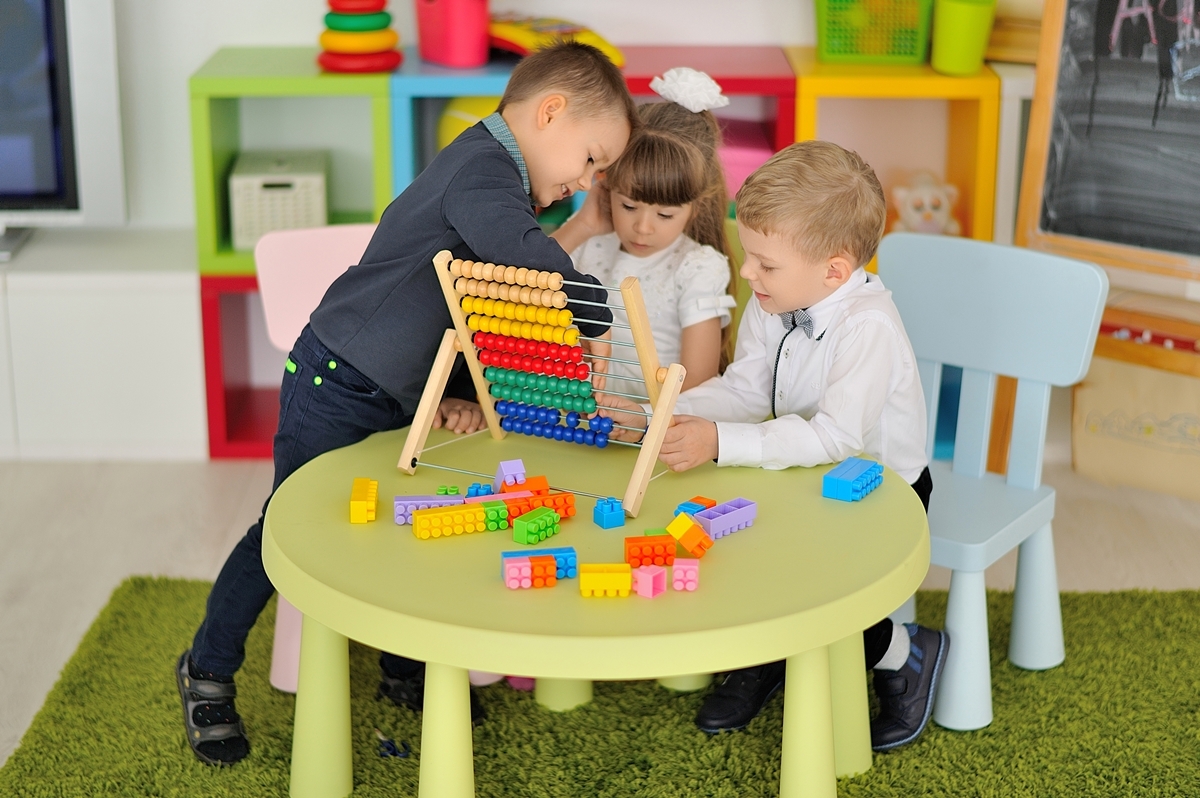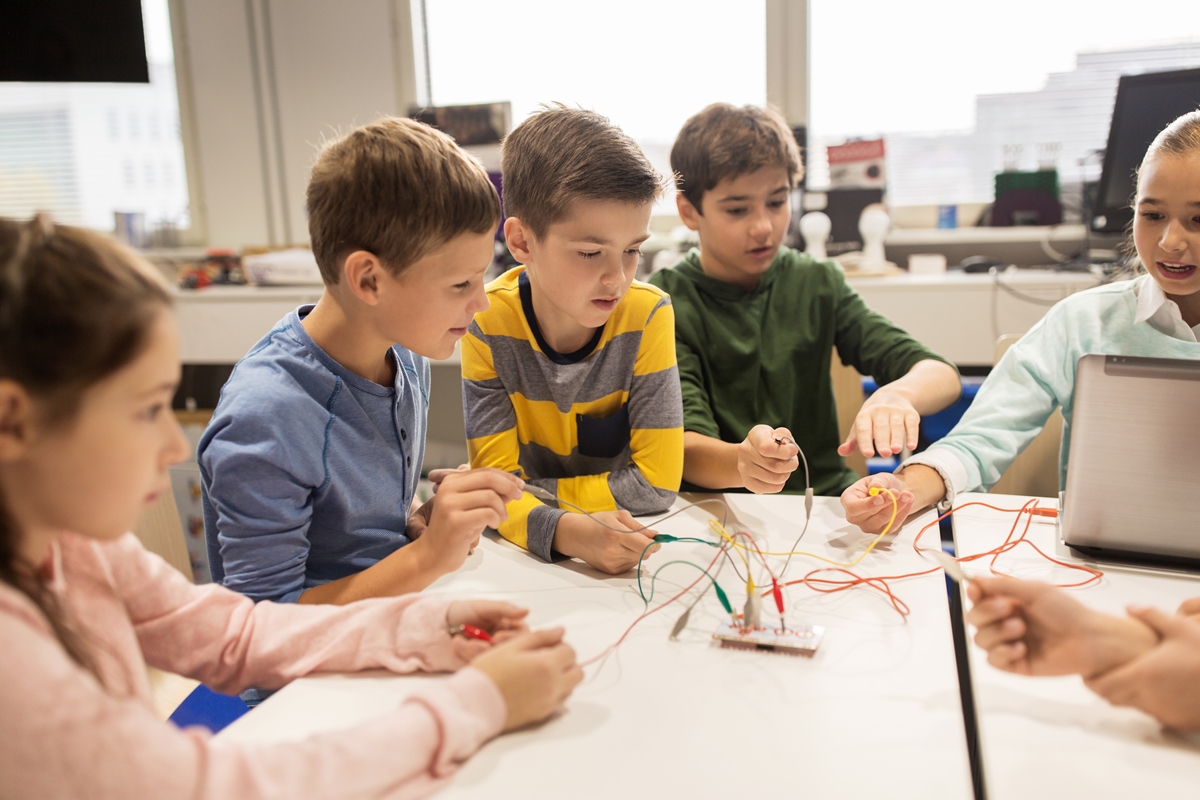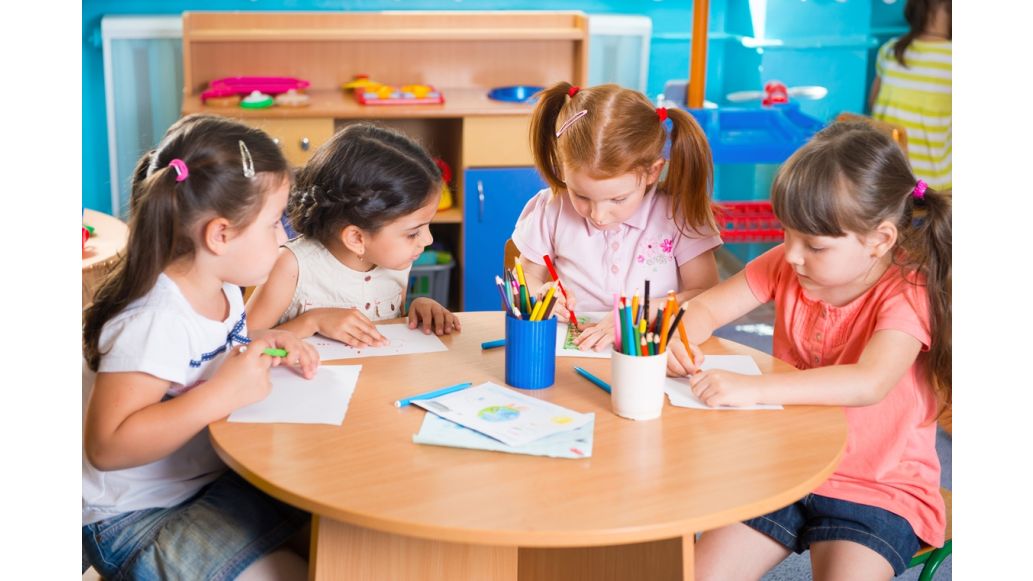Free choice centers, free time, or free play – it goes by different names, but all refer to less structured play time where children get to pick their own activities from choices that the teacher provides. As standards and testing become the focus of classrooms, this time is being reduced or eliminated, but free choice has several benefits for both you and your students.
The Importance of Free Play for Children
- Develops creativity and imagination during crafts or pretend play
- Strengthens motor skills and dexterity
- Lets children practice adult roles and expand their empathy, as they put themselves in someone else’s shoes
- Builds social and emotional skills and teamwork through cooperative play, turn taking, and sharing
- Promotes problem solving, decision making skills, and leadership (figuring out how to make a playhouse, deciding who gets to slide first, solving puzzles, etc.)
- Reduces childhood stress
The Added Benefits of Centers for Teachers
- Expand on and integrate academic content into centers
- Observe students (what they choose to play, who they choose to play with, and group interactions)
- Teach students how to use the center material in a new way or for a new activity
- Individual assessment and instruction time, allows you to pull students for one-on-one academic help or to test students on specific skills
Eleven Ideas for Possible Free Choice Centers

If you’ve decided to add centers to your daily or weekly schedule, you might be wondering what are good choices. Here are some ideas to get you started. Switching out the materials every few weeks keeps the play areas engaging. Adapt the material that’s included depending on the age you teach (preschool, kindergarten, first grade, or other elementary grades).
1. Arts and Crafts Center
- Colored construction paper
- Plain paper
- Easi-Grip scissors
- Glue
- Cloth scraps
- Stencils
- Crayons
- Colored pencils
- Markers
- Playdough
- Stickers
- Sticky foam
- Paint and brushes (if you’re brave!)
2. Math Extension
- Balance scale
- Buttons or small objects for counting
- Pretend money and coins
- Pattern blocks and boards
- Unifix cubes
- Tracing shapes
- Measuring tape
- Math games (number recognition, counting, basic addition)
- Sorting shapes
3. Science Extension
- Magnifiers
- Natural materials (rocks, seashells, leaves, seeds, fruits, vegetables, pinecones, feathers, tree rings, and more)
- Sorting trays and tweezers
- Living things (plants, flowers, a class pet)
- Rulers
- Mirrors
- Prisms
- Pipettes and cups
- Binoculars
- Magnets and magnetic items
- Animal track match-up cards
- Food chain games
4. Fine Motor Extension
- Tweezers
- Divided plates and small objects
- Bead sequencing set
- Connect Four game
- Pipe cleaners
- Paper clips
- Nuts and bolts
- Other small manipulatives for linking and playing
5. Gross Motor Center
- Jumping, skipping, and hopping
- Hopscotch
- Bean bags and buckets
- Clapping games
- Bowling
- Dancing to music
- Riverstones
- Economy balance beam
6. Blocks/Engineering-type Extension
- Blocks
- Lincoln Logs
- Locktagons
- Mini marshmallows and toothpicks
- Peg Building Set
- Lego bricks
- Popsicle sticks
- Straws and tape
- Cups
- Other objects for building and stacking
7. Reading Corner Center
- A to Z Pegboards
- Magnetic letters and boards for creating words
- Dry erase boards and markers
- Both new and familiar books (you can switch these out as their reading level progresses)
- Comfy chairs, large cushions, TheraBand exercise balls, and bean bag chairs
|
"My small groups of 4th and 5th grade reading students always choose to use our Theraband Therapy balls instead of chairs... In addition to sitting on the balls, they often lay across the top of a ball, placing a book on the floor below to read. Giving students the ability to move slightly while reading allows them to maintain focus longer while creating an enjoyable learning environment.” - AnnMarie, Reading Specialist |
8. Dramatic Play Center
- Dress-up clothes, hats, and props
- You could change this area based on what your class is learning about to become a:
- Space Station
- Dentist Office
- Teddy Bear Hospital
- Restaurant
- Driver’s Ed School
- Stage for a Musical or Play
- Dinosaur Habitat
- Apple Orchard
- Post Office
- Grocery Store
- Airport
- Eye Doctor Office
- Flower Shop
- Bakery, Farm
- Race Car Track
- Zoo
- Fire Department
- Pretend School
- And so much more...
9. Storytime Cottage/Play Kitchen/Placehouse Center
- Play food
- Pots and pans
- Plates
- Cups
- Baby dolls
- Baby bottles
- Cribs
- Blankets
- Doll clothes
- Strollers
- Rags
- Empty spray bottles and other pretend cleaning supplies
10. Sensory Center
- Water table and bath toys
- Sand table
- Shovels
- Small toys to bury
- Textured balls or mesh covered balls
- Rice table
- Shaving cream
- Uncooked noodles
- Beads
- Buttons
- Pom-poms
- Playdough
- Therapy putty
11. Music Center
- Drum and drumsticks
- Pots and pans
- Maracas
- Triangles
- Tambourines
- Supplies for making their own instruments (rubber bands, tissue boxes, seeds and toilet paper or paper towel tubes, markers, paper)
How to Implement Centers in Your Classroom

When should centers take place?
Some teachers like to use centers for a small part of everyday. Others use them on “Fun Fridays”, especially if they only teach half-day kindergarten. Another way to incorporate centers is to allow complete free choice one day and choice between only the academic centers another day. This ensures all students have exposure to science, math, and reading centers, but also get to make a choice. Or let them play with the math center materials for a few minutes before using them in a structured activity. You can make the idea of centers work with your classroom schedule. Some days, you might choose to use this time for an extra recess instead, for outdoor play.
How should I introduce centers to my students?
Most teachers introduce centers slowly at the beginning of the school year. You might decide on two stations to start and expand them as your students learn. Modeling and explaining what you can do at each station lets the children know your expectations from the beginning. It might be helpful to use some of the materials during small group work at first before moving it into the centers. As the month continues, you can open the other stations as well.
Give the children a heads up when there are five minutes left so they can finish up whatever they’re working on. Consider using a visual Time Timer to let your students see how much more time they have at an activity. This is especially helpful for little ones who can’t tell time yet.
Should I limit the number of kids at each station?
This is a decision that is best made depending on your individual class. You might want to start with limiting the number of children and then transition to independent choice. Most children will independently move around based on the amount of material available and how crowded it is, but limits might help ensure everyone has a turn.
There are a few ways to regulate the number of kids at each center. You could call students a few at a time to choose a center and close centers as they fill. Be sure to vary the order in which the students are called and make sure everyone sticks with their first choice.
Another option is to color code your centers. Make signs for each center in various colors and have clothespins of the same color. Students can come up when called and take the corresponding clothespin to pin to their clothes. This makes it easy to close a center by removing all clothespins of that color. Students can also change centers during free time by returning their old pin and choosing a new one. Make extras in case they get lost and monitor kids to make sure they aren’t hiding pins to their favorite centers.
If you use small group time to ensure all areas are being taught, you could also let centers be a free choice and not worry if a child really enjoys going to a center multiple times. It’s up to you.
Centers can be a great classroom activity. They let children play and boost their academic knowledge, imagination, and motor skills. Free play also gives you time to observe your students and work with those who need some extra help. It can be difficult to make time for centers in your busy schedule, but the activities and learning are worth it.
Medical Disclaimer: The information provided on this site, including text, graphics, images and other material, are for informational purposes only and are not intended to substitute for professional medical advice, diagnosis or treatment. Always seek the advice of your physician or other healthcare professional with any questions or concerns you may have regarding your condition.








 France
France Australia
Australia



